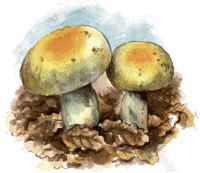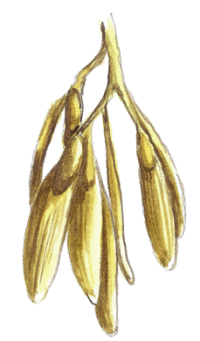A number of principles tend to guide the development of the
Gilbert 21 project and biological recording software.
These are outlined here.

Red-tailed Bumblebee © Stephen Pardue
- Minimise time spent making records
- Suggest, but don't mandate
- Keep the focus on personal observations
- Maximise learning from observations
- Facilitate onward use of records
- Leverage existing free services, data and software
- Keep data structure simple
- The project is 'not for profit'
- Remember - it's supposed to be fun!
This is perhaps the most important guiding principle; it is,
after all, the raison d'être for the Gilbert 21 project. Using a voice data
logger in the field is the single biggest innovation to achieve this end. Using
this method, the time taken in the field to make a record may hardly be any
longer than the time taken to speak the name of the plant or animal seen. No
other method of making records in the field can compare to this. There are new
developments in mobile recording using apps running on PDAs or phones with
built-in GPS, but no mobile application can compare with a GPS data logger with
voice in
terms of speed and convenience in the field.
The price of spending less field-time on the tedious business of making records
is paid when you get home by post-processing the recordings using a computer program. So the other aspect of this guiding principle is to make the
Gilbert 21 program - the software used to post-process information from the
data logger - as efficient and speedy as possible. The total time to make a
record using a voice data-logger and Gilbert 21 program should be no more than
the total time taken to make a record using a method such as a
mobile app. The difference is that with a mobile app, all the time taken is
field-time which reduces the time you spend acutally observing and enjoying
wildlife; whilst with a voice data logger, the larger proportion of the time is
taken away from the field at a time of your choosing (for example whilst your
partner is monopolising the television to watch Dancing on Ice or Match of the
Day).
This
is a key principle guiding the development of Gilbert 21. In
contrast to other biological recording programs which often force you to
choose values for some fields from restricted lists, Gilbert 21 will often allow you to put what you want.

Russula ochroleuca © Stephen Pardue
An obvious example of where this principle is applied is in the taxon name. Most
biological recording programs will insist that the names of the taxa you record
are selected from an internal database of valid taxa. Recorder 6 and MapMate
both do this, for example, and the reasons are clear: these programs are
fundamentally designed to collate biological records from
mutliple recorders and are often used as central data repositories for data
enterprises like National Recording Schemes and Local Record Centres. To allow
unrestricted naming of taxa in these situations would be a recipe for chaos.
Gilbert 21, on the other hand, is designed for personal biological
recording (see also the principle on personal observations). A good way
to think about it is as a more structured version of your field notebook.
If you see a plant hopper which you cannot name at the time, but which you have
come to know as the 'diddy blue hopper', then Gilbert 21 lets you record it as
such, just as you would in a notebook, because it means something to you. It won't mean anything to anyone else of
course, which is
why Recorder 6 or MapMate, to name but two, would reject it. But Gilbert 21 is primarily about your personal record keeping and learning. Therefore the diddy blue hopper will be treated just like any other taxa
until such time as you are able to put a valid name to it.
Clearly though, you will normally want to record identified taxa with valid
names, so Gilbert 21 provides a facility for you to look up and use
valid taxonomic names, just like other biological recording software. The
difference is, it won't complain if you don't choose to use something it
suggests.
This principle is also applied to other fields which are often restricted by
other biological recording programs, notably those fields assoicated with
locations and recorder's names. For example, when you enter a grid reference in
Gilbert 21 - either manually or from a data logger - it can suggest a
location name by comparing the grid reference against a database of
georeferenced location names. You are free to accept any of the suggestions put
forward by Gilbert 21 or use a name of your own making.

Cuckoo © Stephen Pardue
Many times in the field, naturalists want to record observations that aren't,
strictly speaking, biological records. For example noting something about the
weather or perhaps making a general comment that the birds are in particuarly
good voice. Whilst they sit happily alongside biological records in personal
notebooks, biological recording programs do not normally cater for these types
of observation. This is because, by their very nature, they are unstructured and
difficult to combine and analyse with other unstructured information from
multiple recorders. But reading back these kind of personal notes can be very
rewarding and aid the learning of the naturalist who made them. So Gilbert 21
provides a facility to record these types of observations - which it calls
'personal notes' - and these can be recalled and examined just like biological
records.
In this respect, the personality of Gilbert 21 is different from those of other biological recording programs. I envisage that Gilbert 21 will
be used to manage personal records and
many of the software features are designed around that idea.
Gilbert 21 will never sport an equivalent of MapMate's synching capability. This doesn't mean that records from Gilbert 21
cannot be shared: on the contrary there is a very strong emphasis on onward use
of records. But software designed to integrate records from many
different users (e.g. MapMate and Recorder 6) needs a whole set of features and
data structures to facilitate that; features that Gilbert 21 can well do
without.
Most existing biological recording programs confine themselves to large-scale
analyses like distribution mapping, taking advantage of the information
generated by combining records from many different users. Gilbert 21 will
support learning in a different way - I want the emphasis to be on extracting
meaning and lessons from the intimate details of personal records, in much the
same way as a naturalist learns something when re-reading their own notebooks
spanning a number of years. I would like to think, that when I have a few
years-worth of my own personal records in Gilbert 21, information will be
presented back to me in ways that will stimulate ideas about my observations. For example, when I start the program, it would be nice to see
what I recorded on or around the same time in the previous year and the years
before that; I'd like to read back the intimate details of the comments and
personal notes I associated with those records.
Although Gilbert 21 is not designed to collate observations from many different
users, it is designed to facilitate the export of your records so that they can

Crab Apple © Stephen Pardue
be collated and used in other biological recording programs. My aim is to
provide many facilities that ease the burden of moving records from Gilbert 21
into the wider records network from where they can be used to benefit
conservation planning and management.
I want to provide facilities such as the
ability to export records for a given geographical area (e.g. that relating to
an LRC or a Vice County). I also want users of Gilbert 21 to be able to see a
full 'export history' for any given record so that they can recall exactly how
they have exported the record in the past and who have been the recipients.
Gilbert 21 will make use of existing free services, data and software wherever
possible. For example Gilbert 21 makes extensive use of Google Earth, linking to
it to perform a number of different spatial functions. Gilbert 21 does not have
its own taxon dictionary; instead it makes use of the NBN Gateway taxon
dictionary web service, neatly circumventing the huge overhead of maintaining
its own. As an example of making use of free data, Gilbert 21 uses free
gazetteer resources from the Ordnance Survey to suggest location names for
records georeferenced by GPS.
I aim to keep the data structure of records held in Gilbert 21's database flat -
that means a single table for all the stuff that comprises the actual
observations. This comes at a slight efficiency cost when compared to a properly
normalised structure, but the relatively simple data structure of a biological
record means that cost needn't be too high. An advantage is that it makes the
coding and maintenance of the software far simpler as well as making the
database more robust.
There are, of course, other tables in Gilbert 21's database that aren't directly
part of the biological records and observations. For example there will be a
number of tables around the funcitonality to provide export histories for
records.

Ash keys © Stephen Pardue
I have no intention of making a commercial product from Gilbert 21. But I
will be very happy if any of the ideas it involves are taken on board by
commercial biological recording software suppliers.
The main driving force behind Gilbert 21 is my own desire to make biological
recording as efficient as possible and to prevent it from detracting from my
enjoyment of nature in the field. The last thing I want to happen is to make a
rod for my own back with Gilbert 21. This principle is to remind me of that!
One of the things I need to avoid is trying to make it do to much. Remembering
what Gilbert 21 is not, is just as important as recognising what it is.
Gilbert 21 is not commercial software and therefore does not have to be bound by
normal software design conventions. I will not worry too much about flouting
these if it makes the software more efficient to use, though I will endeavour to
avoid making it too counter-intuitive.